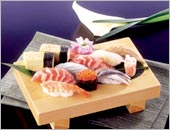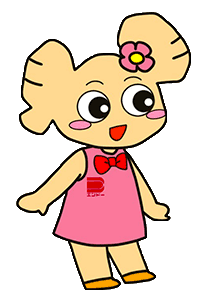Company History
- HOME
- Company Info
- Company History
Recalling our Corporate History in Photographs
to make delicious sushi more accessible to people.
Thanks to this trend, demand for gari, or sweetened pickled ginger, has risen significantly! We have entered an era in which the mass production of gari is now essential.
We produce a product under the brand name Shingari-Kanseihin. In both its commercial and retail versions, it is currently a favorite choice among many sushi restaurants and households. The history of this product until its perfection traces the very foundations of Endo Foods Co., Ltd., as it stands today.
Let us now take a walk down memory lane as we recall our corporate history in photographs.



With a device that was improved to facilitate the slicing of ginger, we carefully sliced each piece by hand.

It’s said that the original recipe for Shingari-Kanseihin was the product of extraordinary efforts and research!

While materials were purchased from Taiwan for about ten years, the industrialization of Taiwan resulted in higher commodity prices. As the prices of basic ingredients also soared, we shifted our focus to the Philippines. However, as goods of a decent level of quality were not produced there, we looked to Thailand instead as a source of our imports.
For the next twenty to thirty years, we purchased goods from Thailand and continue to do so even today.
Nevertheless, with the poor state of local peace and order and the lack of any means of transportation in mountainous areas in those days, procurement was a truly difficult task. By seeking to mechanize our operations at an early stage while importing large amounts of basic ingredients from overseas, we managed to attract human resources and expand on an ongoing basis.



Registration Symbol®
 It was no easy matter to win the support of sushi chefs, who have exacting and particular standards in such matters, for our Shingari product. However, by repeatedly undertaking a trial-and-error process and carefully exploring ways in which we could enhance the taste of Shingari, our Shingari-Kanseihin earned the backing of many sushi chefs who declared that this product was, in their words, “Delicious!” Shingari was shipped in those days to sushi restaurants in eighteen-liter cans, a type of packaging still in use today. Small packets for retail sales were also produced.
It was no easy matter to win the support of sushi chefs, who have exacting and particular standards in such matters, for our Shingari product. However, by repeatedly undertaking a trial-and-error process and carefully exploring ways in which we could enhance the taste of Shingari, our Shingari-Kanseihin earned the backing of many sushi chefs who declared that this product was, in their words, “Delicious!” Shingari was shipped in those days to sushi restaurants in eighteen-liter cans, a type of packaging still in use today. Small packets for retail sales were also produced.
 Package design can be identified as one factor behind the popularity of Shingari-Kanseihin. The design of Shingari-Kanseihin, which is still in use today, evokes the drop curtain used by the then-popular Kabuki Theatrical Corporation and was created by borrowing the red, yellow, and green color scheme that can be seen in the form and coloring of characters commonly used in that world.
Package design can be identified as one factor behind the popularity of Shingari-Kanseihin. The design of Shingari-Kanseihin, which is still in use today, evokes the drop curtain used by the then-popular Kabuki Theatrical Corporation and was created by borrowing the red, yellow, and green color scheme that can be seen in the form and coloring of characters commonly used in that world.
This design corresponded to the positive image of dynamic vitality associated with native Tokyoites and was heralded by Tokyo-style sushi vendors as a design perfectly suited to sushi. The package design in use today still evokes the same visual associations as did the original design. In the forty-five years since our founding, we have always maintained the same great taste and delivered a delectable delight to our customers.
Current design of commercial packaging for Shingari-Kanseihin ![]()
